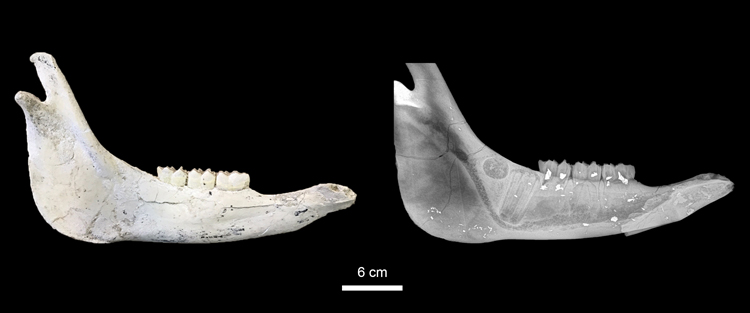The sequence of cheek teeth mineralization, eruption, and replacement of an extinct horse species is here documented with radiological techniques for the first time thanks to the exceptional preservation of Hipparion sp. mandibles from Cerro de los Batallones (Madrid Basin, Spain). The sequence of dental ontogeny in mammals provides valuable insights about life history traits, such as the pace of growth, and about the mode of formation of fossiliferous assemblages. This study have determined that the order of permanent cheek teeth mineralization and eruption of hipparionine horses is m1, m2, (p2, p3), p4, m3. Cheek teeth mineralization timing of hipparionine horses coincides with the one observed in modern equids. In turn, there are differences in the eruption timing of the p4 and m3 between horses belonging to the Anchitheriinae and Hipparionini compared to equids of the Equus genus that might be related to the shorter durability of the deciduous tooth dp4 in anchitheriine and hipparionine horses and, more broadly, to an increased durability of equid teeth through their evolutionary history. Based on the dental eruption sequence, hipparionine horses are slow-growing, long-living mammals. The Hipparion sp. assemblage from Batallones-10 conforms to an attritional model, as individuals more vulnerable to natural mortality predominate. informacion[at]ebd.csic.es: Domingo et al (2018) First radiological study of a complete dental ontogeny sequence of an extinct equid: implications for Equidae life history and taphonomy. Sci Rep 8: 8507 https://doi.org/10.1038/s41598-018-26817-3
https://www.nature.com/articles/s41598-018-26817-3

